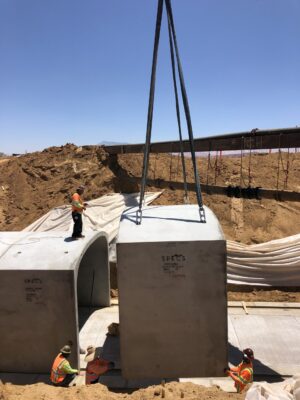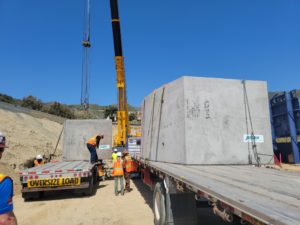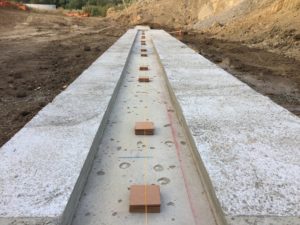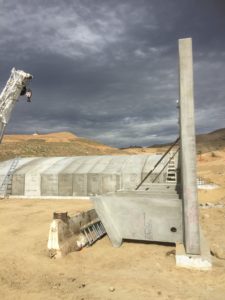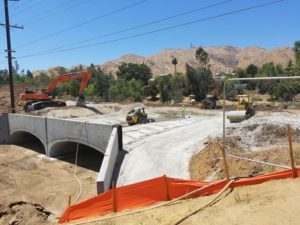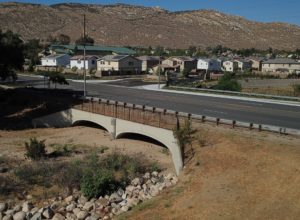Clients are often curious about precast arch installations and how quickly they can be completed. The following photos help illustrate the way the materials are shipped to a jobsite, as well as how the crane handles the units.
The units are delivered to the jobsite on their side.
The crane lifts the unit from the truck, rotating it in the air before setting it.
Units feature chamfered butt joints with a recommended ¼” to ½” joint spacing.
The contractor installs a drainage pipe behind the wall prior to placing and compacting free-draining structure backfill.
Video footage credit: Mike Hanna, PEC West
The last few items before backfill include applying a joint-wrap, securing filter fabric at wingwall joints and placing grout in the arch keyways and between the wingwall anchors and foundations. There’s no delay to wait for concrete cure times, so backfill can begin just days after installation. A well-planned installation can result in a bridge open to traffic in less than a month.

